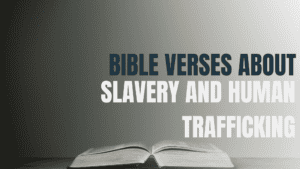Generally speaking, the Christian community is very vocal about pro-life beliefs and efforts. It’s incredibly beautiful to see the Pro-Life movement come together across denominational lines to educate, inform, and activate the body on a national and local level. Yet, sometimes in our passionate conversations and in efforts to save the preborn, we can also alienate members of our movement. Many times, the post-abortive are neglected, even in our home church.
Hurting the hurting.
I was recently at a gathering of pro-life Christians, where an attendee of the meeting was moved to tears when asking how anyone could abort their child. This woman has a beautiful testimony of adoption and feels blessed to be adopted. Because of her life experiences, she is challenged to understand the desperation of an abortion decision. At the moment, without ill intent, another woman responded, “they are just selfish.”
While this response is somewhat accurate because most abortions are a decision made out of self-preservation, the way it was delivered felt harsh. Her words cut me. My heart instantly grieved at the thought of a post-abortive man or woman hearing those words and how they would validate their thoughts and feelings of being unworthy, dirty, and broken. She later apologized for her choice of words.
As I left that meeting, I was thankful that God allowed that moment to happen; He allowed me to see how easily we could potentially discourage the post-abortive from opening up and sharing their story.
How do we SEE the post-abortive in our churches?
These are the most recent numbers reported by Guttmacher:
- 1 in 4 women will make an abortion decision by age 49
- 54% of these women identify as Christian
- 59% of abortions are obtained by patients who had at least one birth
- 39% of patients were white, 28% black, 25% Hispanic, and 9% other races & ethnicities
With 1 in 4 women making an abortion decision by the age of 49, the likelihood of us encountering someone post-abortive is very high. These women are in our homes, churches, schools, circles of friends, and workplaces.
Shouldn’t we be hearing their stories?
How come we don’t know who they are?
Why do these statistics shock us?
How can we serve the post-abortive in and through our churches if we aren’t able to see them?
They have tucked the guilt, shame, and pain away and put a brave face on, because the fear of rejection is too much to risk. Many of them have been a part of conversations where a blanket statement is made about people who choose abortion, resulting in the post-abortive feeling like they are unable to share their experience.
We can serve them without seeing them by being aware that the abortion rate is the same inside the church walls as it is outside of the church. What we say and how we say it matters! We have the power of life and death in our tongues (Proverbs 18:21).
Will we lead the broken into the arms of The Redeemer or allow them to remain bound by their abortion experience?

Post-Abortive Recovery Resources
Help for those who are hurting.
How do we SERVE the post-abortive in our churches?
I love to give meaningful gifts! I get so excited when I know that I have picked out the perfect present. It begins with considering the needs of the person andeverything going on in their current circumstances. Then, I’ll take note of their hobbies and interests. Lastly, the wrapping has to be just as amazing and thoughtful as the gift itself! Shouldn’t we see serving the post-abortive in a similar way?
Every person is incredibly unique and deserves our intentionally seeing them and ministering to them with God’s love. Here are a few ways that your church community can serve the post-abortive:
- Talk about God’s desire to heal hearts from the pulpit.
- If you are post-abortive and have walked through healing, share your story! We can help others heal; we overcome by the blood of the lamb and the word of our testimony. (Revelation 12:11)
- In our pro-life conversations, be mindful that 54% of women who have experienced abortion identify themselves as Christians. The post-abortive, hurting people in need of support and love, are in our churches!
- Refrain from using harsh language and judgment when speaking about those who have experienced abortion; it’s God’s kindness that leads us into repentance. (Romans 2:4)
- Offer abortion healing support groups in your church. A few resources are Surrendering the Secret, Forgiven & Set Free, and Transforming Your Story.
- If you are unable to offer an abortion healing support group at your church, connect with a local pro-life pregnancy center to see if they provide one and partner with them. You can also connect with SupportAfterAbortion.com for real-time confidential resources.
.




















